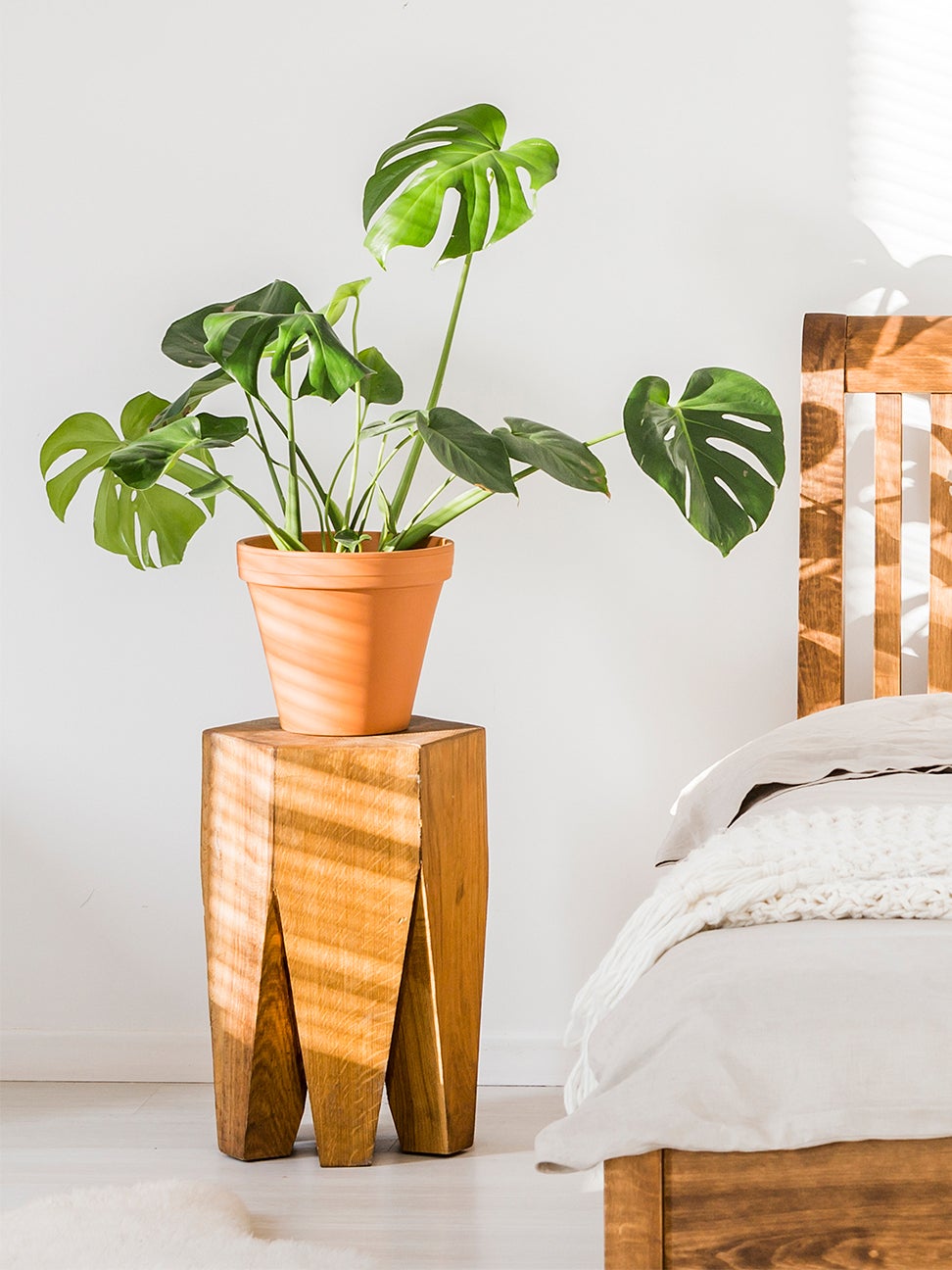How to Care for a Monstera—Even If You’re Not a Plant Pro
We answer all the questions, from watering to root rot.
Published Mar 1, 2019 7:00 PM
We may earn revenue from the products available on this page and participate in affiliate programs.
Au revoir, birds-of-paradise, fiddle-leaf figs, and Boston ferns: There’s a new trending plant in town. Native to Central America, the tropical monstera is famous for its hole-filled leaves, which is how it got the nickname Swiss Cheese. (Cute, right?) And it’s not hard to see why it’s become a bona fide houseplant icon—it’s easy to care for, looks good on the ’gram, and even comes in apartment-friendly sizes. But before you decide to bring one of these tropical beauties into your home, you’ll want to brush up on monstera care. First, figure out whether or not the plant can even survive in your space: It requires a good amount of bright, indirect light, and it likes some humidity, too. To get the full lowdown, we tapped a slew of experts—The Sill’s plant expert Christopher Satch, Bloomscape’s resident plant mom Joyce Mast (yes, that’s her real title), and Rooted’s plant-care specialist Gabby Santiago—to answer every single question you might have about this photogenic foliage. And don’t panic: The monstera is totally beginner-friendly.
How much sun does it need?
According to Santiago, a monstera can tolerate low light, but it thrives in bright, indirect light—direct sun can scorch the leaves. “I keep mine in a western exposure and it’s really happy there,” she says. To ensure that it’s growing evenly, just remember to rotate it every so often, Mast advises.
How much water does it need?
Your watering schedule should vary from season to season. In the summer, give it a drink as soon as the soil dries out, advises Satch. In the winter, hydrating your plant once every one to two weeks will do the trick (you can check this by sticking a finger two inches down; if it comes out dry, it’s time for some H2O). A bit of humidity is also welcome; Mast recommends giving the plant a good mist every morning so the water can evaporate by evening, and Santiago advises keeping on a humidifier to prevent brown, crispy edges from forming. This will also help the leaves from getting dusty (though if that happens, you can gently wipe them down with a damp cloth).
How should I pot it?
Like with any indoor plant, drainage is your friend—keeping your monstera in a pot with holes can help you from accidentally overwatering it. Santiago and Mast both recommend planting it with well-draining peat moss potting soil and adding a moss pole or a piece of wood to give it something to climb on—fishing wire can also help coax it into place. If you care for it well, the monstera grows quickly and may need to be repotted; Mast advises using containers that are about two inches larger than the plant.
“Monsteras release chemicals from their roots that suppress the growth of other greenery, so whatever you do, don’t pot other plants in the same planter,” Satch adds. He also recommends repotting your monstera every year.
How can I tell if it’s thirsty?
If its base leaves are turning yellow, your monstera probably needs more water—but that’s easy to fix. Mast recommends the “bottom soak method”: All you have to do is fill a sink or tub with two to four inches of lukewarm water, set your plant in the water sans saucer, and let it soak for 30 to 45 minutes if it’s a small- to medium-size monstera, or an hour and a half to two hours if it’s a large plant. You can also use the sink’s spray nozzle or a showerhead to give the top of the leaves a good spritz. Then drain the water and let the plant sit for about 45 minutes before returning it to its spot.
How can I tell if it’s overwatered?
You’ll know your monstera is overwatered when its base turns brown and mushy. But good news—it might be possible to save it, says Santiago. You’ll want to remove the whole plant from its soil and check out its roots, looking for any that are black or brown (they’ll also smell like mildew). Remove those roots and spray the rest with a mixture of peroxide and water to kill bacteria. Then repot with fresh soil. If you catch root rot early enough, you might be able to revive the entire plant.
Should I fertilize it?
Not necessarily! Santiago instead recommends feeding your plant some organic plant food (like that from Super Thrive or Pro Organics) once a month in spring and summer—in the cold season, growth is slower anyway, so it’s not essential.
See more plant guides: Everything You Need to Know About the Fiddle-Leaf Fig The Plant That’ll Make It Feel Like Summer in Your Home All Year Long How to Care for Succulents (and Other Low-Key Plants)




